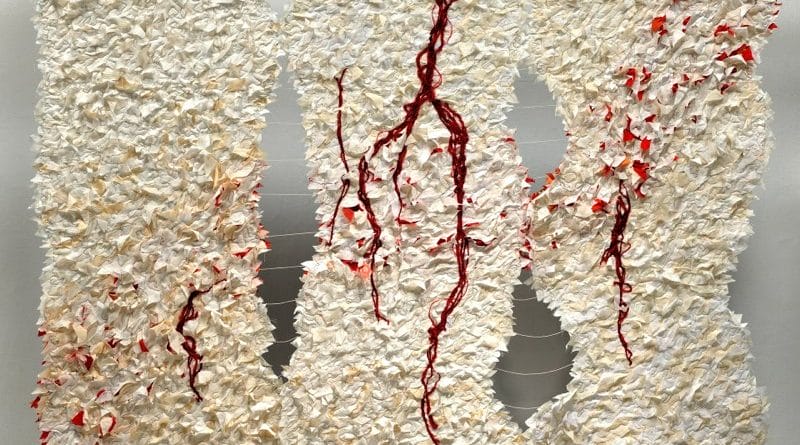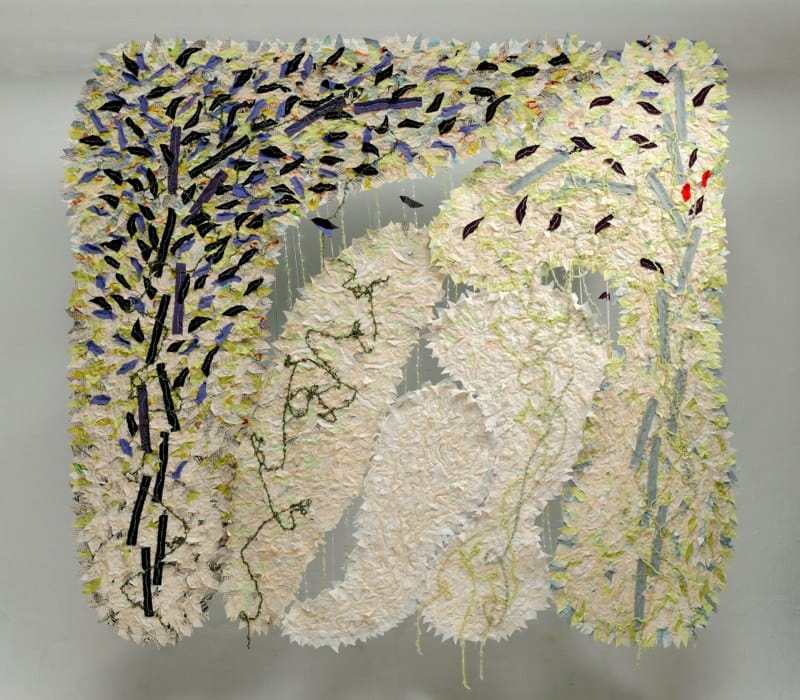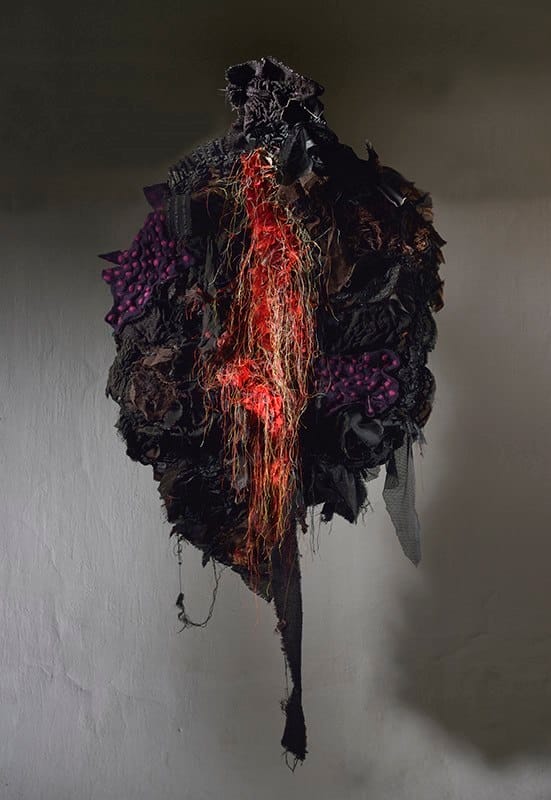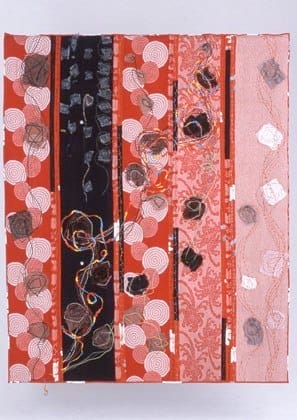Chiaki Dosho: Enchanting Monochromie
Featured photo: CHERRY BLOSSOM 10
Chiaki Dosho is a well-known and esteemed Japanese textile artist.
Her works are majestic and three-dimensional, they have a strong visual impact and are closely related to Japanese sensibility, symbolism and lifestyle. In fact, the work “Cherry Blossom 10”, which represents the petals of cherry blossoms moved by the wind (“I want to express the sadness hidden behind the sumptuous appearance of cherry blossoms”) is linked to the symbolic value that the cherry blossom takes on in Japanese culture.
Below is the link to the artist’s website:
CHERRY BLOSSON IV
Why did you choose to use fabric and threads as a medium for your art?
I was very interested in fashion. I studied fashion first. I went to a school to become a professional. So I learned a lot about the materials. Next I learned quilt. Quilt taught me to make arts freely. My work changed from a traditional quilt to an art quilt. While pursuing the art quilt, it gradually turned into a fiber art quilt. And now I am a Mixed-Media artist and making arts freely.
Can you tell us something about your history as an artist? How did you start?
When I started quilting, I thought that I wanted to stay at home when my child comes back home. I wanted to do a job that I can do at home. However, I realized how great it is to express myself while making a work. And I got into the art world. To me, I needed art to overcome a lot of difficulties that occur in my life. For me now, art itself is to live and is the time of my life.
CROSSING TIME (full and detail)
How does Japanese culture impact your work?
I was not conscious of my Japanese-ness before. However, as I made a lot of works, I began to become conscious of the Japanese DNA I have in my body. That is, color, scent, wind, temperature so on. That we have in the transition of the four seasons. And it is the unique seasonal events in Japan, the sensitivity of Japanese people, and how they live. They are stuck inside my body without noticing. I felt that many of those things came out in my work even I was unconscious of them.
What are you inspired by?
I get inspiration from everything that pulls at my heartstrings such as nature, artists’ life styles and work, cloth, paper, paint, DIY, etc.
LIGHT & DARK (full and detail)
You make art quilts and fiber art works. How and why did you move from art quilts to fiber art?
I had no intention on the transition I was a quilt teacher.at a patchwork school in Japan. I wanted to do a better lesson. So I decided to go back to college again. And I learned textiles at Musashino art Univercity. I have stepped into the world of fiber art.
How does a new artwork come about? Can you tell us about your creative process?
First, I think about the theme of the work. Once it is decided, I picture an image in my mind. That is the same as making a movie in my mind. Sometimes also a stage. Then I analyze them. What kind of material should be used to materialize the image, which technique should be used, or if a new technique is needed. I use a lot of materials and techniques to embody my new work.
LIGHT&DARK II
h120xw30
How has your style changed in the years from the first artwork to the last?
At first, it was a traditional quilt with patterns. Next, it was a creative quilt with an idea added to it. The third one was an original design quilt. The fourth one changed into an art quilt the new technique. The fifth one started adding fashion materials to it. The sixth one began using Japanese kimono. It worked well on my work. I started using the kimono for the seventh one and started finding my original technique. I started dyeing, painting and descharge on the last one.
WANDERING
How do you choose the materials of your works? Are there materials you prefer and use more often?
I like individuality materials. I also make good use of fashion. Sometimes I also use gardening and DIY materials. I also use materials of paintings. What I like the most now is Japanese old kimono.
COCOON 2
Chiaki, most of your artworks are almost monochromatic. Why this choice?
I do not prefer colorful fashion that much. My favorite clothes are black. Black is the color with the least color, and I think that is the color that makes the most image. Then the next color is white, monochrome, red, purple and so on. Whenever I see monochrome makes me feel philosophical. I would like to show what I felt and my mind through my work. Monochrome matches the best. I love pictures. Especially I love monochrome photos. And that might be one of the reasons why I love monochrome in arts. By the way, I had a dream to become a film director or a play director when I was child.
Chiaki, is there an element common to all your work?
I lost a lot of important people. There are big natural disasters, wars and other problems. The more I get older, the more I think about the important things. When I use kimono, deconstruct it. Kimono began to speak to me while working with many kimonos. There are a lot of processes for kimono. Each process has each craftsman’s heart and thought. By doing so, we can tell the life of people. Such as poor people, rich people who work at bars. Worn Kimono which were found during the war, and personality. I feel like they’re speaking to me through the kimono. I would like to share my stories.
Can you talk about your artwork you are particularly fond of?
In 2005 I was chosen to the American Quilt National and the French Artexture competition. I’ve been selected to receive award before in Japan. Once, the “SAQA” group, which is the U.S. division of “Quilt National” sent me documents about joining the group. I joined the professional division without knowing anything. This was the chance to start going around the world. Working on ” bubbles II ” I felt that I was free to do anything, so I started trying out new techniques. This led to “Cherry Blossom ” done in the style of “Artexture”, and the start of my art.
BUBBLE II





